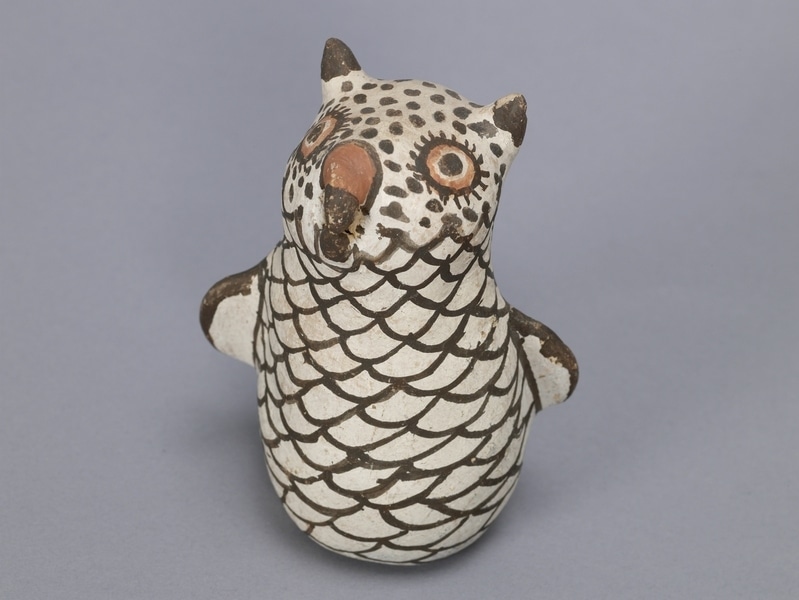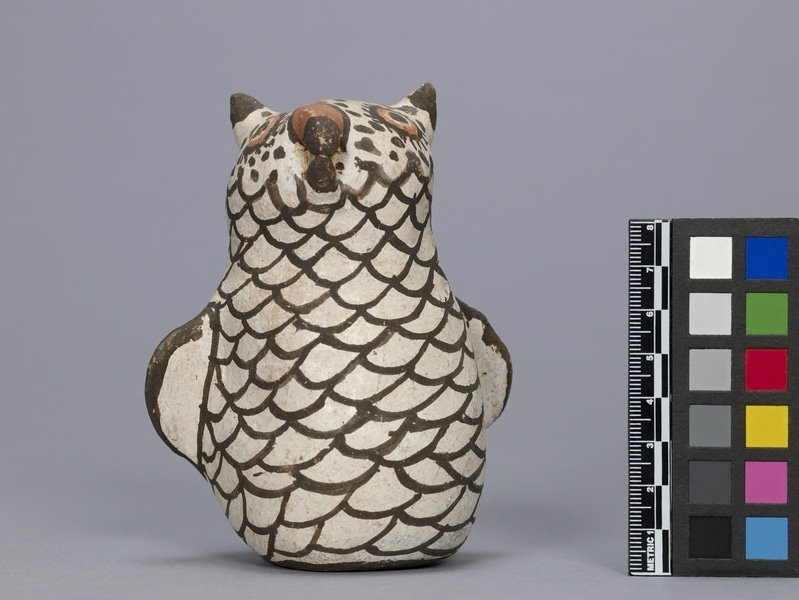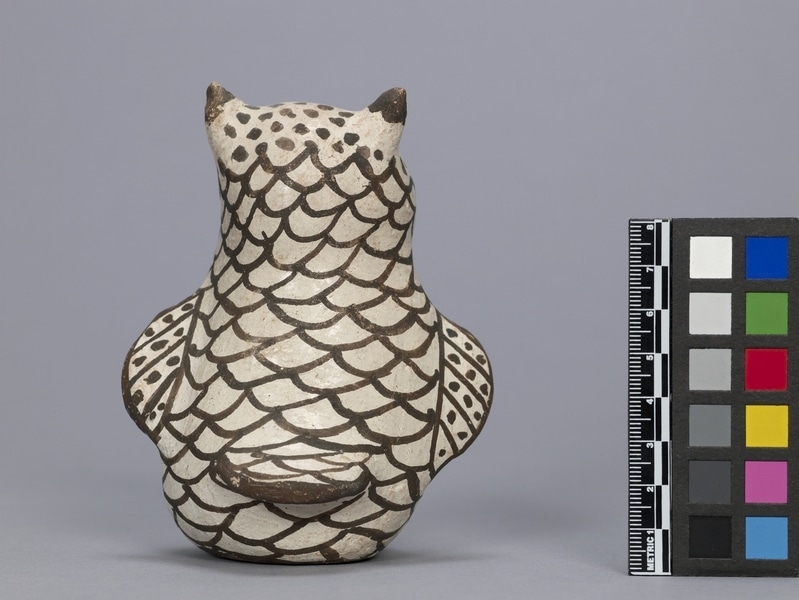Owl Figure Item Number: 2731/140 from the MOA: University of British Columbia




Description
Long gourd-shaped, pale orange clay owl has a grayish white body onto which have been hand painted, in black, a pattern of overlapping feathers, and large spots at the head. Top surface of wings are decorated with alternating stripes and dots and the base is a solid black. Crooked loop beak and bulging eyes are two-tone black and pale red.
Narrative
Pottery owls became important tourist items when the railroad and then Route 66 allowed for large numbers of tourists to travel to the Southwest. This collection of 192 Zuni pottery owls includes examples from before 1900 through 2006. Zuni potters continue to make owls and family traditions in the medium continue. While many younger potters are innovating, the owls are distinctly Zuni.
Iconographic Meaning
In traditional Zuni lore, the owl is considered a wise guardian and protector. An owl’s ability to see at night means that it sees what others cannot, giving it understanding of the spiritual and physical world.
Item History
- Made in New Mexico, USA
- Collected during October 2006
- Owned by Daniel Ma before February 24, 2009
- Owned by David Evans between October 2006 and February 24, 2009
- Received from David Evans (Donor) and Daniel Ma (Donor) on February 24, 2009
What
Who
- Culture
- Zuni
- Previous Owner
- Daniel Ma and David Evans
- Received from
- David Evans (Donor) and Daniel Ma (Donor)
Where
- Holding Institution
- MOA: University of British Columbia
- Made in
- New Mexico, USA
When
- Collection Date
- during October 2006
- Ownership Date
- before February 24, 2009 and between October 2006 and February 24, 2009
- Acquisition Date
- on February 24, 2009
Other
- Item Classes
- ceramics
- Condition
- good
- Current Location
- Case 90
- Accession Number
- 2731/0140